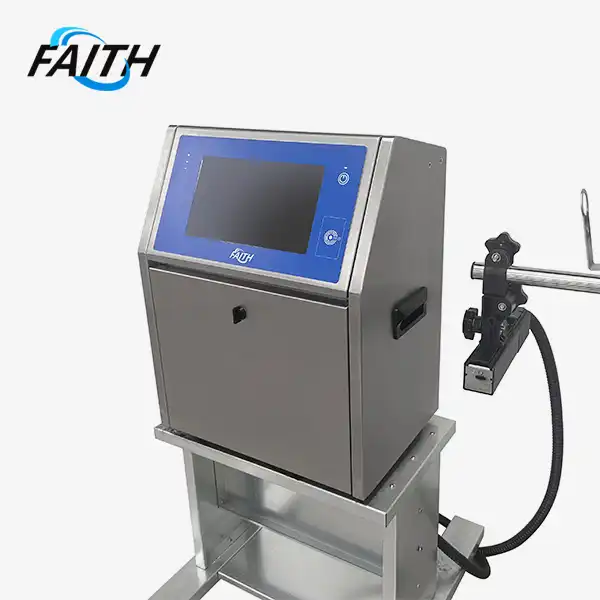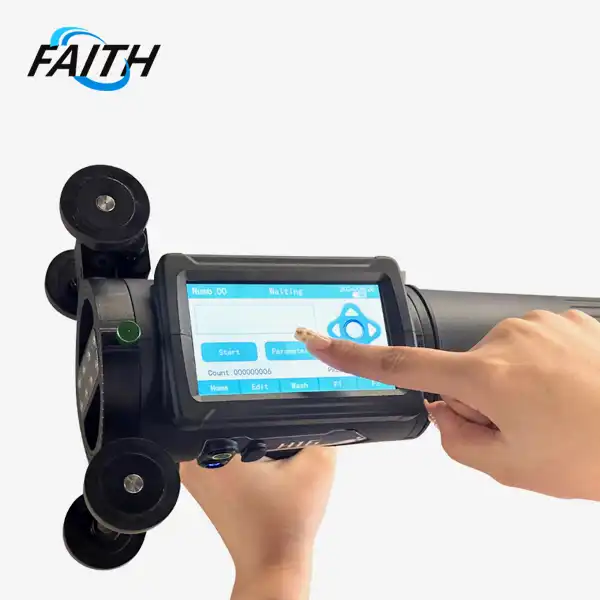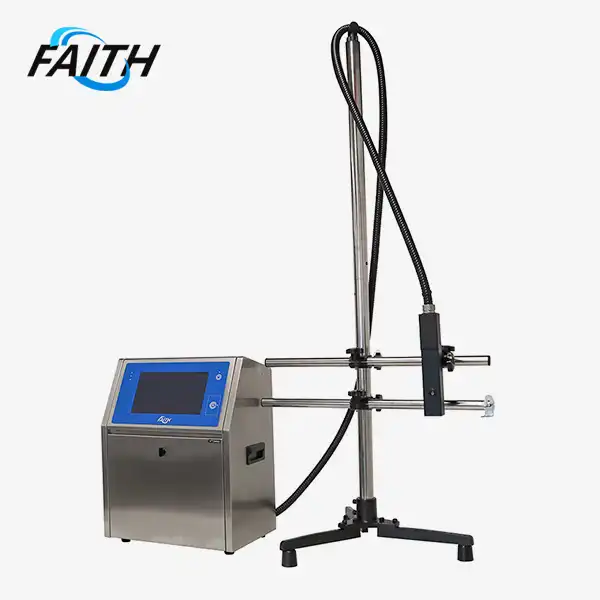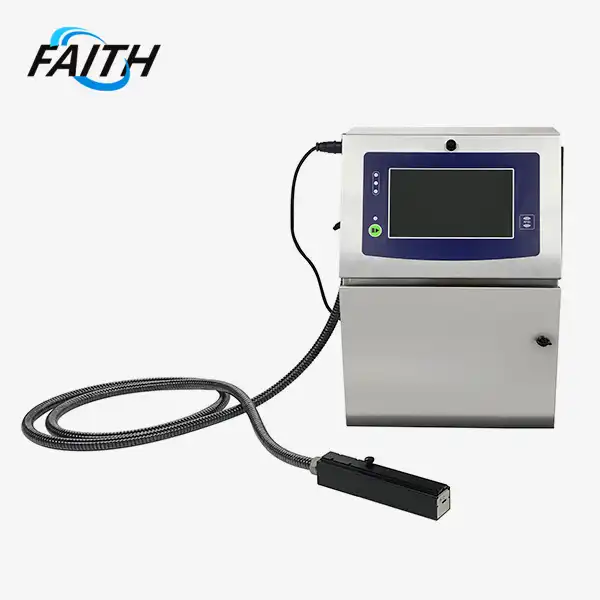Do inkjet printers dry out?
In the world of industrial printing, the question "Do inkjet printers dry out?" is a common concern for manufacturers across various sectors. This issue is particularly relevant when considering CIJ Inkjet Printers, a popular choice in many production environments. Let's delve into the intricacies of CIJ technology and address this crucial question.
The Mechanics of CIJ Inkjet Printers: A Closer Look
CIJ inkjet printers are a deed of modern building, tackling the control of charged particles in an electric field to make high-speed printing. These printers create a ceaseless stream of ink beads, with a few models creating up to 70,000 beads per moment. This fast bead arrangement is made conceivable by a gem oscillator vibrating at greatly tall frequencies, which breaks the ink stream into person beads. The result is exact, quick, and effective printing, perfect for high-demand mechanical applications.
CIJ printers are known for their exceptional precision in controlling tiny ink droplets. Each droplet is charged and directed by an electric field to a specific location on the printing surface. This allows for extremely fine and detailed prints, even on surfaces that are not perfectly flat. The printer's ability to control droplet size and placement ensures high-quality results, whether the surface is flat, curved, or irregular. This level of accuracy is critical for industries where precision and legibility are paramount.
CIJ inkjet printers are highly valued across many industries for their speed, precision, and versatility in printing on diverse materials. They are particularly common in sectors like food and beverage, pharmaceuticals, and cosmetics, where quick and accurate marking or coding is essential. From printing batch numbers and expiration dates to logos on packaging, CIJ printers excel in delivering clear, legible prints. Their ability to handle various substrates makes them an indispensable tool in high-speed manufacturing environments, ensuring efficient and reliable production processes.
Addressing the Drying Issue: CIJ Printers and Ink Management
Now, let's tackle the big question: do these printers dry out? The answer isn’t as simple as it may seem. CIJ Inkjet Printers are equipped with advanced ink management systems that effectively prevent drying, even during extended periods of inactivity. These systems maintain optimal ink flow and keep the printhead in good condition, ensuring that the printer remains ready for use without the risk of clogging or drying out, even when not in constant operation.
Unlike standard inkjet printers found in offices or homes, CIJ printers feature a closed-loop ink circulation system. This system keeps the ink continuously flowing, minimizing the risk of drying or clogging. Even when the printer isn’t actively in use, the ink remains in motion, which helps maintain its fluidity and prevents it from drying out in the nozzles. This continuous circulation ensures reliable performance and reduces maintenance, making CIJ printers highly efficient for long-term use in industrial environments.
Additionally, CIJ printers use specialized inks formulated to resist drying, even when exposed to air. These inks remain fluid for extended periods, ensuring reliable performance in industrial environments. This characteristic is especially important in settings where production lines may experience unexpected stoppages or scheduled maintenance, as it prevents ink from clogging the system and ensures the printer remains operational when production resumes. This reliability is key for maintaining consistent and efficient printing on the production floor.
Maximizing CIJ Printer Performance: Best Practices
While CIJ Inkjet Printers are built to resist drying out, proper maintenance and operation are still crucial for optimal performance. Here are some best practices to ensure your CIJ printer remains in top condition:
- Regular Maintenance: Regular maintenance is crucial for the long-term performance of CIJ inkjet printers. Scheduling routine cleaning and maintenance checks helps prevent potential issues such as ink clogging, nozzle blockages, or system malfunctions.
- Proper Shutdown Procedures: Always follow the manufacturer's recommended shutdown procedures when the printer is not in use. These procedures typically involve properly sealing the ink system to prevent exposure to air, which can cause the ink to dry or thicken.
- Environmental Control: The environment where the printer is located plays a significant role in ink performance. Maintaining the proper temperature and humidity levels in the printing area is essential to prevent ink from drying too quickly or becoming too viscous. Excessive heat can accelerate the drying process, while low humidity can cause the ink to thicken, leading to print quality issues or system clogs.
- Quality Ink: Using high-quality, manufacturer-recommended ink is key to ensuring compatibility with your CIJ Inkjet Printers. Substandard or incorrect ink can cause clogging, poor print quality, or damage to the printer.
- Frequent Use: Regular use of the CIJ printer helps maintain ink circulation and prevents drying issues. When the printer is used frequently, the ink remains in motion, reducing the likelihood of clogs or dried-out nozzles. If the printer is left unused for extended periods, it's more prone to ink drying, which can lead to maintenance challenges and lower print quality.
Conclusion
In conclusion, while the question "Do inkjet printers dry out?" is a valid concern, CIJ inkjet printers are designed with advanced technologies to mitigate this issue. Their continuous ink circulation system, coupled with specially formulated inks, makes them highly resistant to drying out. This resilience is one of the many reasons why CIJ printers are a popular choice in industrial settings, offering reliability, versatility, and high-speed performance.
For more information about industrial UV inkjet coding and traceability system solutions, including CIJ Inkjet Printers, please don't hesitate to contact us at sale01@sy-faith.com. At Shenyang Faith Technology Co., Ltd., we're committed to providing innovative, high-quality printing solutions tailored to your specific needs.
References
1. Magdassi, S. (2009). The chemistry of inkjet inks. World Scientific Publishing Company.
2. Hoath, S. D. (Ed.). (2016). Fundamentals of inkjet printing: the science of inkjet and droplets. John Wiley & Sons.
3. Zapka, W. (Ed.). (2017). Handbook of industrial inkjet printing: a full system approach. John Wiley & Sons.
4. Kettle, J., Lamminmäki, T., & Gane, P. (2010). A review of modified surfaces for high speed inkjet coating. Surface and Coatings Technology, 204(12-13), 2103-2109.
5. Hutchings, I. M., & Martin, G. D. (2012). Inkjet technology for digital fabrication. John Wiley & Sons.
Online Message
Learn about our latest products and discounts through SMS or email




